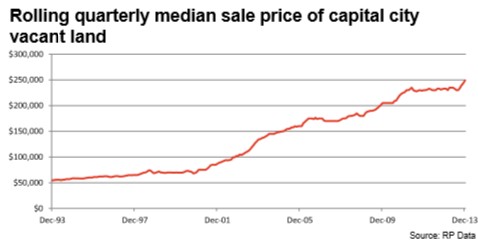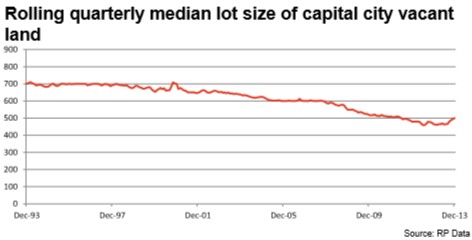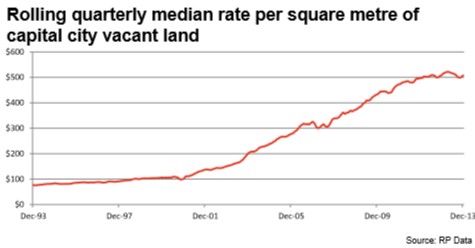Jane Goffman, principal of consultancy firm Active Planning, has penned a piece in The Canberra Times this afternoon lamenting the increasing popularity of McMansions across the nation’s capital – a trend also present in other jurisdictions around Australia:
…recent inquiries show all that is changing and increasingly the one-size-fits-all approach to planning that the ACT has borrowed from other cities produces XL homes crowded into small, medium and large blocks of land…
The appetite for extremely large new houses on blocks large, medium and small is putting pressure on the very qualities that make Canberra a special place to live. Excessively large homes do nothing to improve affordability or sustainability. In fact, they do the opposite, driving up land values and house prices while degrading the environment overall, reducing on-site stormwater detention and robbing suburbs of soil, landscape and habitats.
No longer is there adequate space to plant a big shade tree at the back let alone a hedge along the side for screening. No longer is there room for a veggie patch in the sun, or a lawn big enough to romp in or let a dog run around. Where once neighbours might have chatted casually over the back fence there’s now barely room to squeeze a clothes line, and the view from the street is dominated by a wide double garage and an expanse of walls, with minimum planting space for a front garden.
There is an unhealthy flow-on effect, either by design or by default, that children growing up in these Extra Large homes and McMansions typically spend most of their recreational time indoors, in front of electronic screens, instead of out playing and learning about the world first hand.
In my view, it is government policy that has encouraged the proliferation of larger sized dwellings.
For starters, limited new land supply (the result of artificially imposed growth boundaries), compounded by new and exorbitant levies on new housing (the combination of which can exceed $100,000 per dwelling), and high compliance costs created by complex and uncertain planning regulations, have combined to significantly increase the price of fringe land, whilst significantly reducing its size (see below RP Data charts).



With the land component now comprising 50% to 70% of the total cost of new houses, compared to around 30% in the 1970s, many buyers are incentivised to ‘upsize’ into larger models. After all, what’s an extra $50,000 for a few extra rooms when the total cost of a modest home on a small lot already exceeds $400,000?
Then there are the state governments’ punitive stamp duties – which can cost up to half a year’s salary – which encourage home buyers to buy big now in order to avoid having to upgrade later and paying the tax again in the future.
There are also the perverse outcomes caused by the urban growth constraints themselves. For instance, the building of large houses on tiny blocks, with narrow footpaths and roads (because of the excessive land prices), allows little room to plant trees or veggie gardens. It also means that homes are so close together that many do not contain roof eves or verandas and have poor air flow, thereby requiring greater air conditioning in the summer. The lack of backyards and open space also encourages children to remain inside playing video games and watching TV, which of course uses more energy.
It’s a problem alright – but it’s a problem of restrictive planning and exorbitant land costs.

